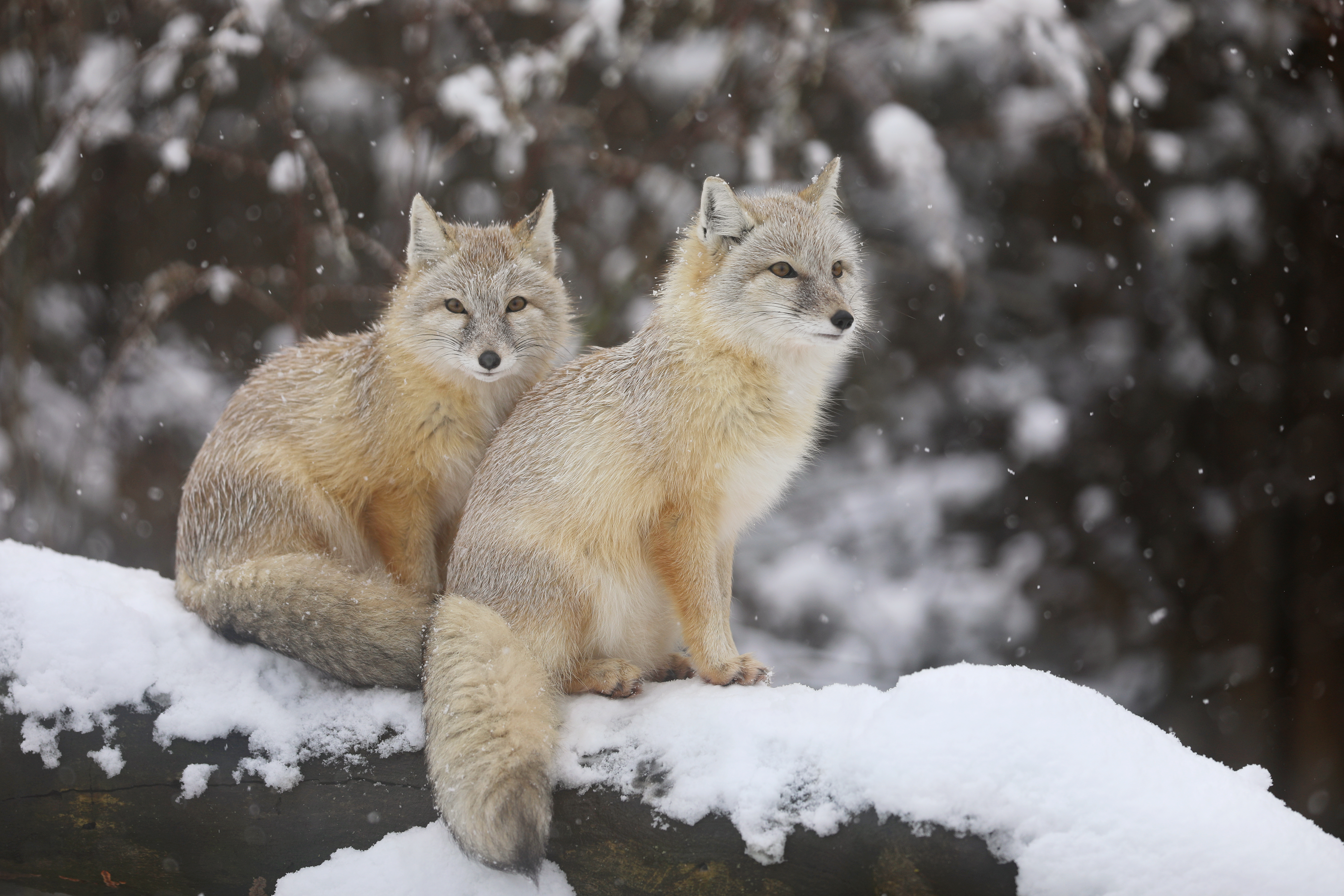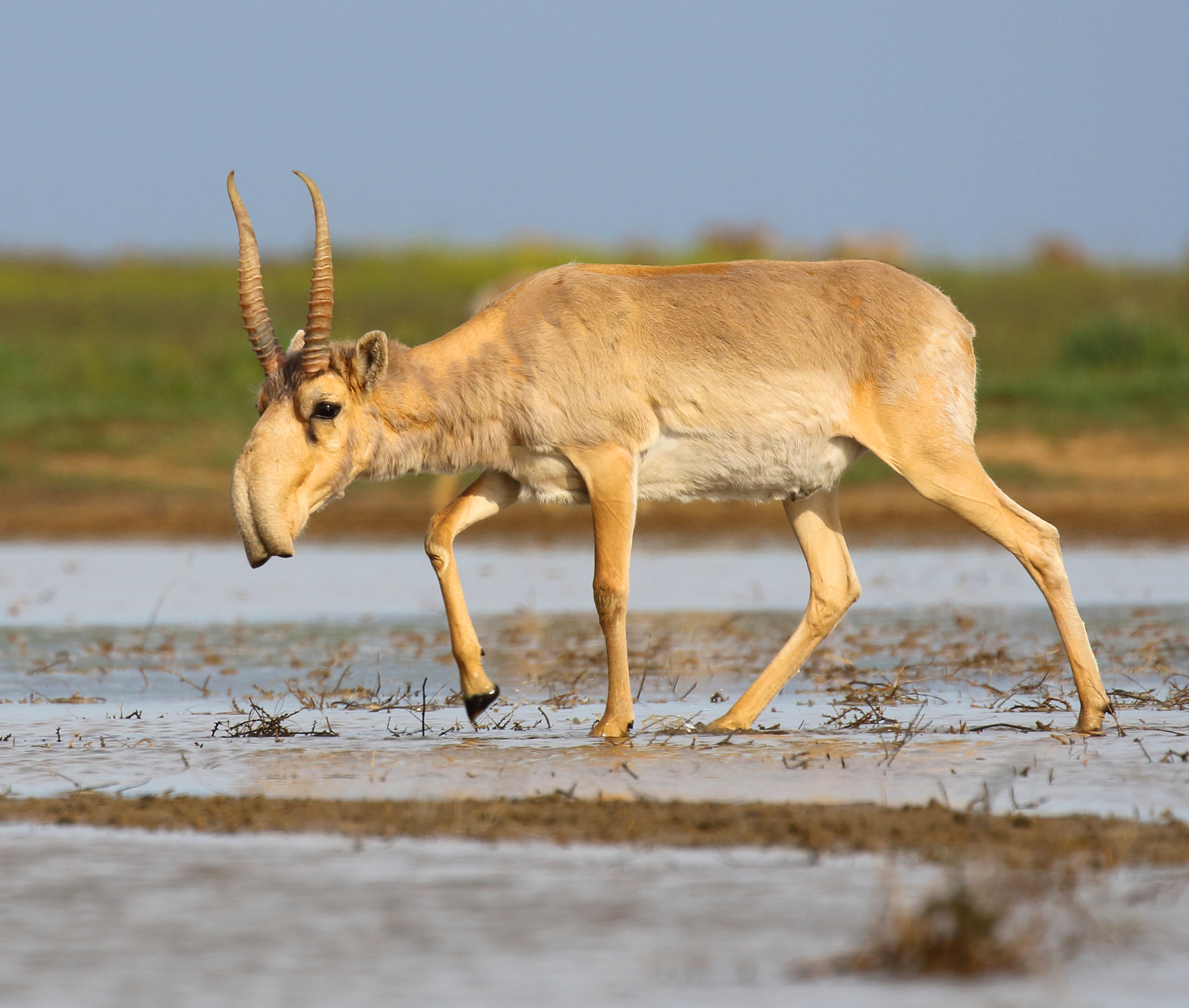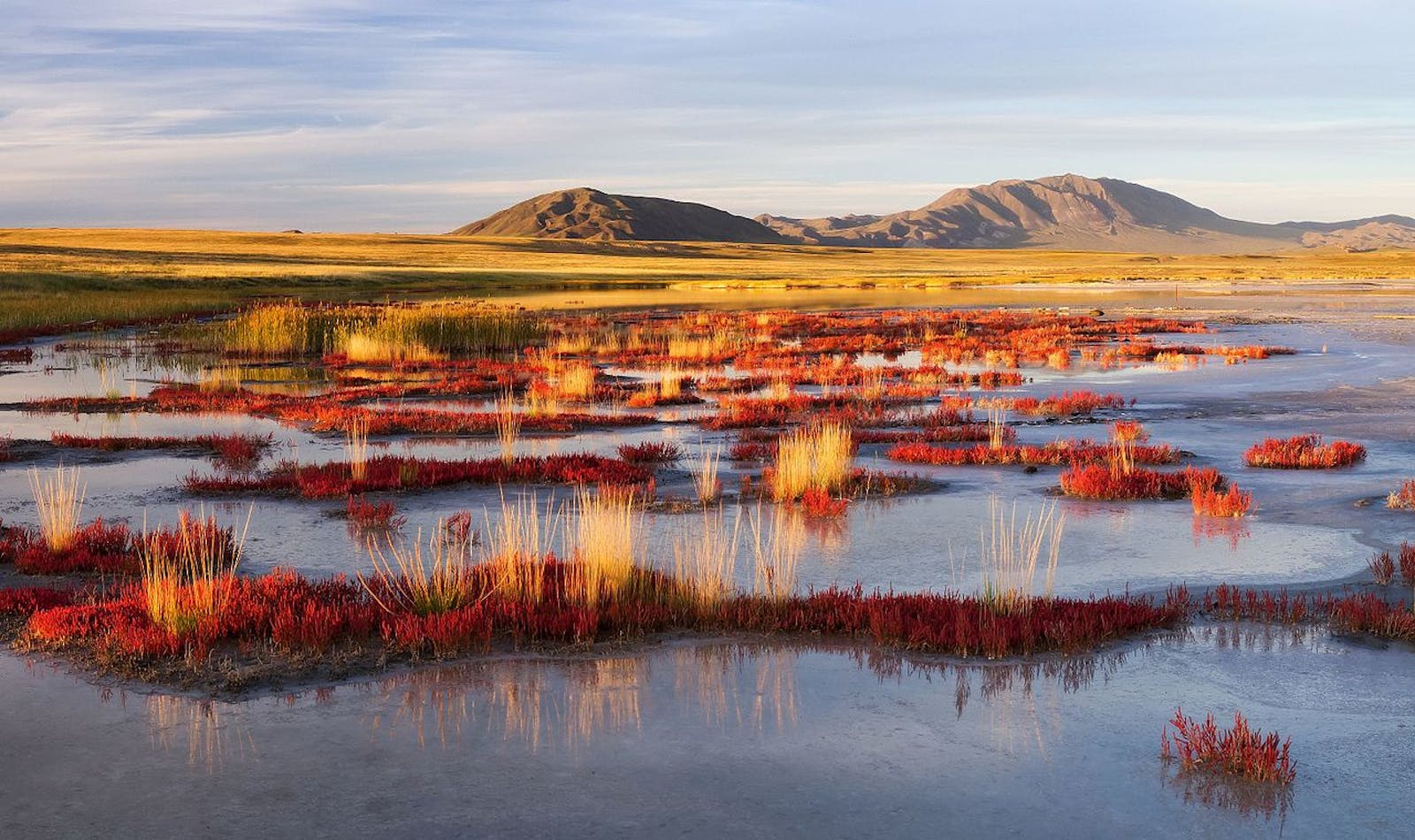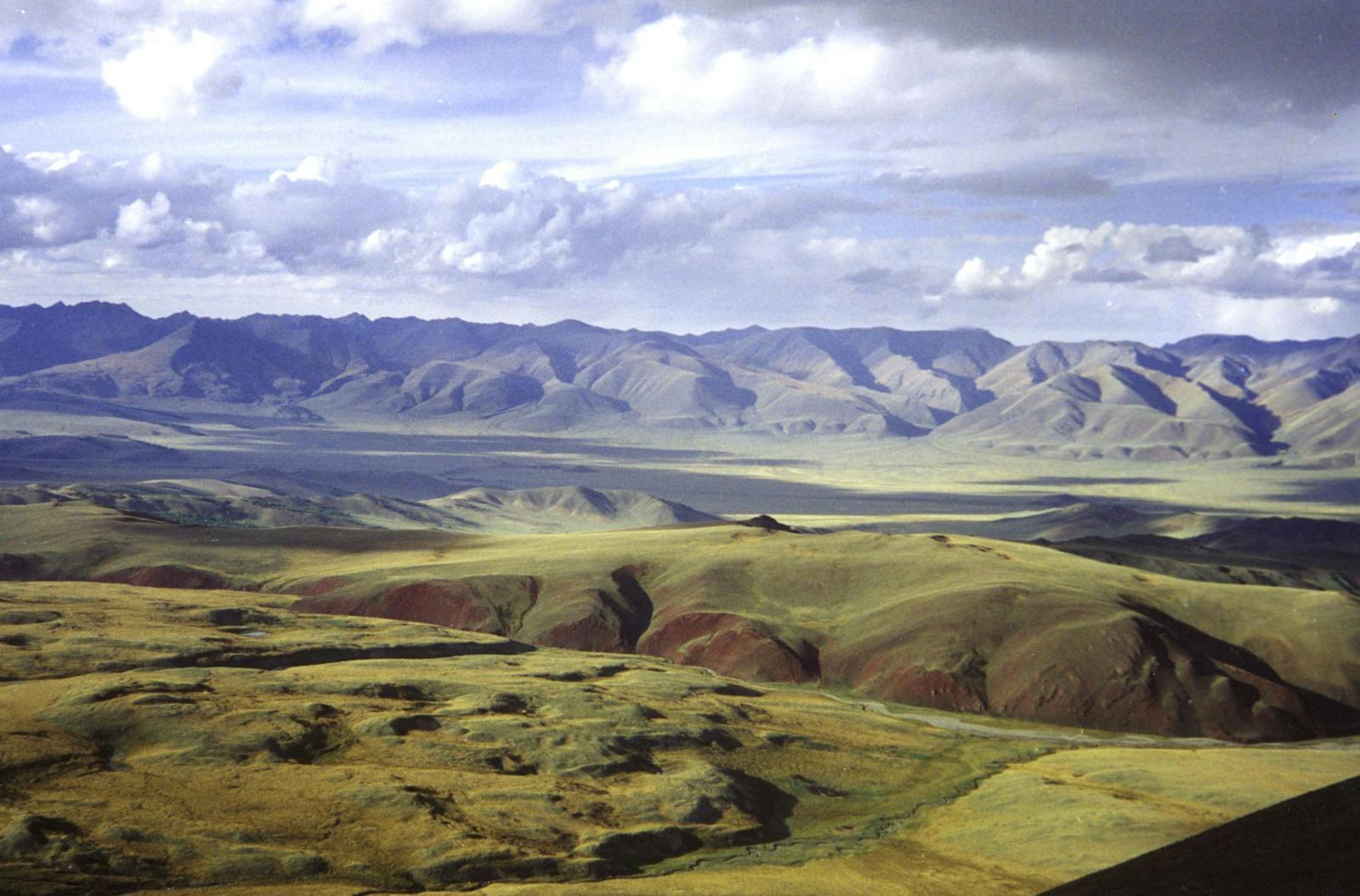Great Lakes Basin Desert Steppe
The ecoregion’s land area is provided in units of 1,000 hectares. The conservation target is the Global Safety Net (GSN1) area for the given ecoregion. The protection level indicates the percentage of the GSN goal that is currently protected on a scale of 0-10. N/A means data is not available at this time.
Bioregion: Junggar Semi-Desert & Ermin Valley Steppe (PA38)
Realm: Eastern Eurasia
Ecoregion Size (1000 ha):
15,757
Ecoregion ID:
826
Conservation Target:
59%
Protection Level:
3
States: Mongolia, Russia
Hosting habitats ranging from lush lakeside reedbeds to desert dunes, the Great Lakes Basin Desert Steppe ecoregion is a cradle for Asian biodiversity. Hundreds of bird species flock to the freshwater and saline lakes, critically endangered saiga and goitered gazelle browse desert steppe vegetation, and snow leopard stalk the Siberian ibex and argali taking refuge from winter storms. Vulnerable Asian houbara perform an extravagant courtship display at the same site each year.

The flagship species of the Great Lakes Basin Desert Steppe ecoregion is the Corsac fox. Image credit: Creative Commons
This huge depression is bounded by the Mongolian Altai mountains to the west, Gobi Altai mountains to the south, Tannu Ola mountains to the north, and the Sangilen and Khangai ranges to the west. Within the basin are six large lakes: freshwater Khar-Us, Khar, and Airag and saline Uvs, Khyargas, and Dörgön, remnants of a huge freshwater basin that existed during the Pleistocene.
The basin is in the rain-shadow of the Tannu Ola Range, which shelters it from prevailing, moisture-bearing, north-westerly winds from Siberia and there is a massive difference between average January temperatures of -31.1C and July temperatures of 18.8ºC. Annual precipitation is 137mm and rainfall peaks in July.
Large lakes are surrounded by undulating plains, interspersed with small lakes, salt pans, and low hills. A mosaic of desert steppe and desert communities can be found above 50° N latitude (about the same latitude as Prague in Central Europe) with grasses (Stipa krylovii, Stipa glareosa, Cleistogenes squarrosa), shrubs of Caragana species and Atraphaxis frutescens, semi-shrubs such as Anabasis brevifolia and Artemisia macrocephala, bulbs (Allium species) and herbs such as Potentilla astragalifolia.

Saiga antelope. Image credit: Andrey Giljov, Creative Commons
Large beds of common reed surround lakes, with tall marshlands of Bolboschoenus planiculmis and Typha laxmannii, saline meadows of marsh arrow-grass, sea milk-wort, anserina, and Halerpestes sarmentosus, specialists of salty ground such as chicken-claws, and tussocks of Stipa splendens, marking the transition to steppe and desert. Lake Uvs Nuur has its own endemic plants: Astrogalus polozhinae, Stipa barhanica, and Astragalus tuvinicus). Some eastern parts of the ecoregion are covered with large sand dune areas, for example the Mongol Els near the Zavkhan River.
Habitats ranging from lake to desert provide homes to a diversity of animals. The ecoregion hosts an isolated population of critically endangered saiga, goitered gazelle, and an isolated population of Mongolian gazelle in the Mongol Els. Siberian ibex seek the lower areas during the winter and are hunted by snow leopard. Corsac fox and Pallas’s cat hunt small mammals such as endangered Mongolian marmots. Asian houbara live in the semi-desert.
Over 359 bird species are recorded for the lakes. Endangered Pallas’s fish eagle and eastern imperial eagles hunt for prey, Asian dowitcher, swan goose, Blythe’s reed warbler, and Dalmatian pelican are found in lake habitats; bearded vulture, Himalayan griffon, and cinereous vulture scour the area for food. Endemic fish, Oreoleuciscus angusticephalus and O. dsapchynensis live in the ecoregion’s lakes and rivers. Characteristic reptiles include variegated toadheaded agama, multi-ocellated racerunner, Gobi racerunner, and steppes ratsnake.

Dalmatian pelican. Image credit: Creative Commons
With the rise of individual livestock farming after the collapse of the Soviet collective system, the number of moves and distance between seasonal pastures have decreased, concentrating domestic animals near water sources and degrading the steppes and meadows. There are several large protected areas, including Uvs Nuur Basin World Heritage Site and the Har Us Nuur and Mongol Els National Conservation Parks.
Overgrazing, steppe fire, and disturbance of the water regime are serious threats in this ecoregion. Extraction of gypsum, quartz, clay, sand, and gravel is occurring along with salt, tungsten, and gold mining. Due to habitat degradation, the ecoregion’s Pallas’s cat and Dalmatian pelican populations are nearly gone.
The priority conservation actions for the next decade will be to: 1) manage grazing livestock numbers and movement; 2) prevent human-caused fires; and 3) minimize and prevent pollution from mining and mineral extraction.
Citations
1. Joint Research Centre of the European Commission. 2019. The Digital Observatory for Protected Areas (DOPA) Explorer 4: Great Lakes Basin desert steppe. [Online]. [Accessed 11th December 2019]. Available from: https://dopa-explorer.jrc.ec.europa.eu/ecoregion/81316
2. Gunin, P.D. and Saandar, M. eds. 2019. Ecosystems of Mongolia Atlas. Ulaanbaatar: KMK Scientific Press.
3. IUCN World Heritage Outlook. 2017. Uvs Nuur Basin 2017 Conservation Outlook Assessment. [Online]. [Accessed 11th December 2019]. Available from: https://worldheritageoutlook.iucn.org/explore-sites/wdpaid/900880
4. WWF. 2018. Central Asia: Western Mongolia into southern Russia. [Online]. [Accessed 10th December 2019]. Available from: https://www.worldwildlife.org/ecoregions/pa1316


.png?auto=compress%2Cformat&w=300)

